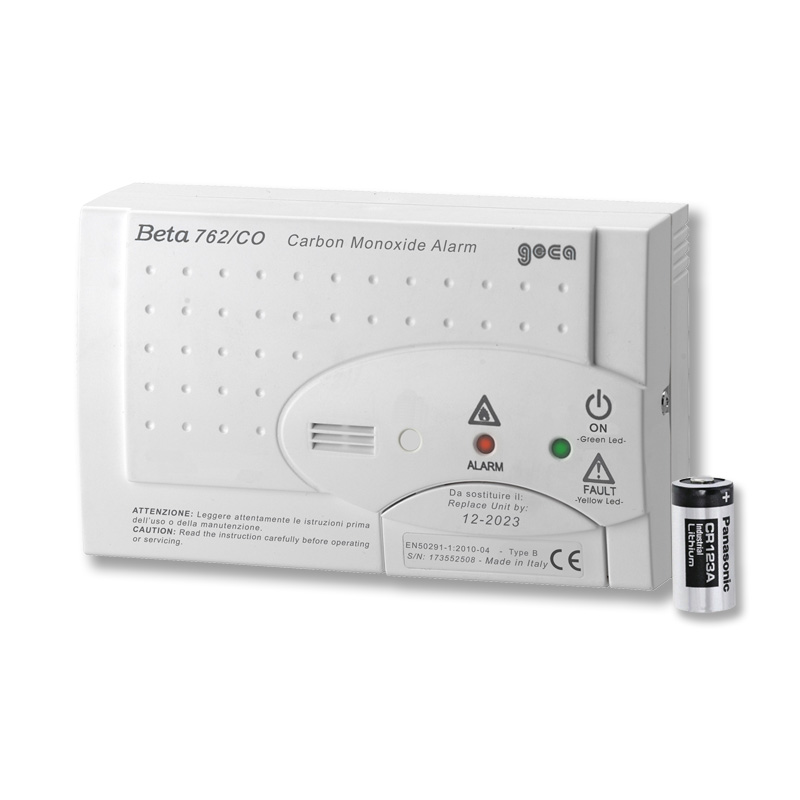Produced by:

P.IVA 03124320171
via E.Fermi, 98 - 25064 Gussago (BS), Italy
Tel.+39 030 3730218
2276BETA 762CO - SE325EC Battery carbon monoxide detector
BETA CO detectors warn of the presence of carbon monoxide in the environment where they are installed with an optical and acoustic signal. At the end of the prescribed duration period, an optical signal warns to replace the unit. See more...
BETA CO detectors warn of the presence of carbon monoxide in the environment where they are installed with an optical and acoustic signal.
At the end of the prescribed duration period, an optical signal warns to replace the unit.
Standard Specifications
Power: Lithium battery 3V - 1400 mAh (NOT replaceable)
Battery life: more than 6 years (in normal operation)
Sensor life: more than 6 years in a domestic environment according to specifications
Working temperature: -10 ° C ... + 45 ° C
Relative humidity: 30% ... 90% UR
Sensor operation limit: 5000 ppm max 15 minutes
Maximum storage time: 6 months
Intervention thresholds:
- l50 ppm for 70 minutes
- l100 ppm for 20 minutes
- l300 ppm for 1 minute
Acoustic signal: 80 dB (A) to 1 meter
Protection degree: IP42
Electronic self-diagnosis with anomaly signal
The product meets the alarm concentrations specified in the standard EN 50291-1: 2010 “Electrical devices for the detection of carbon monoxide in domestic environments”
To view the video, you need to accept our Cookie Policy. If the player doesn't appear, click the link below.
BETA 762CO - SE325EC Battery carbon monoxide detector/images/zoo/BETA_762CO_batteria.jpg<p>BETA CO detectors warn of the presence of carbon monoxide in the environment where they are installed with an optical and acoustic signal.<br />At the end of the prescribed duration period, an optical signal warns to replace the unit.</p>Domestic Gas DetectorsTo learn more about this product
Explore additional information and general details
Do you need further informations?
Get in touch with us
If you have not found the product or service you want, or if you need a tailor-made project contact us now! We are happy to help.
Contact Us




